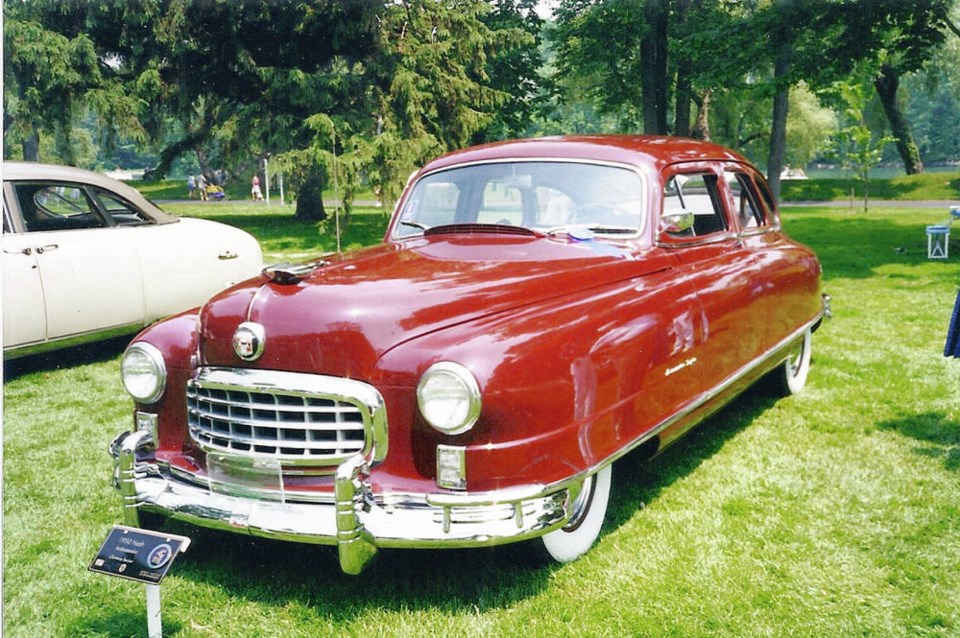Although body-on-frame automobile construction once predominated, unit construction is now virtually universal. It has made modern cars much safer with their sturdy passenger cells surrounded by deformable crumple zones engineered to absorb crash energy.
In the early days most automobiles evolved from horse-drawn buggies and carriages. The engine, running gear and suspension were attached to a channel-section steel frame usually of the ladder type which formed the car’s foundation. The body was mounted on top of this, the majority of them open until the mid-1920s. They were pretty basic and flexible affairs.
Early bodies were mostly wood but that gradually gave way to all-steel construction, principally through the pioneering sheet metal stamping research of Edward Budd’s Budd Manufacturing Co. of Philadelphia in the early twentieth century. The Dodge Brothers launched the Budd all-steel auto body in their first production car in 1914.
But the body and frame were still separate. Then Italy’s Lancia company began showing the way with the 1922 Lambda model with a body/frame structure formed as one welded unit.
Its substantial floorpan and two deep steel side members were held together at the front by strong cross members at the radiator and cowl, and at the rear by a box-shaped section.
In 1934 France’s Citroen, inspired by Budd’s sheet metal work, applied the first true unit construction body and frame to its front-wheel drive Traction Avant model. It was so successful Citroen built the Traction virtually unchanged for more than 20 years.
American manufacturers also became interested in unit construction in the 1930s. Chrysler Corp. enhanced its engineering reputation by exploring auto aerodynamics. It also took the first step toward unit construction by fitting the body of its new 1934 Chrysler/DeSoto Airflow with a light superstructure. This was then bolted to the main frame and this unit type construction combined with an aerodynamic shape made the Airflow a revolutionary car.
The Airflow was very strong, and to quell competitors’ rumours that its new body was unsafe, Chrysler engineers pushed one over an 11-storey cliff in Pennsylvania and then drove it away, bruised but still drivable.
Two years later the Ford Motor Co. followed Chrysler’s lead with its new, aerodynamic Lincoln Zephyr using a light body-frame. Cord used similar construction.
Full unit construction came to the American industry in 1941 when the Nash Motor Co. boldly adopted a Budd-engineered one-piece body unit for its all-new Nash 600 Ambassador model (600 miles on a tank of fuel).
By eliminating the heavy frame on this popular priced mass produced car, Nash did more than any other company to legitimize the unibody in American cars. Nash standardized unit construction in all models including its 1949 Airflyte and compact 1950 Rambler.
When Nash and Hudson joined to form American Motors Corp. in 1954 Hudson had already been using unit construction since 1948 in its “Step Down” designs. Willys-Overland’s Aero Willys compact introduced in 1952 also had unit construction.
Monocoque could be called an advanced type of unit construction, a different type of unit construction in which most of the stress is carried by the outer body skin, like an egg. In regular unit construction the forces are borne predominantly by the floor, cowl and roof structures. Monocoque started in aircraft and spread to buses and trains, including the famous Budd-bodied record setting diesel powered Burlington Zephyr.
A disadvantage of monocoque for cars is that voids significantly weaken the structure, and cars require large openings for doors, windows and trunks. Monocoque works very well for aircraft where only five or six per cent of the body area is open. In cars it’s closer to 50 per cent.
Monocoque construction has been used principally for competition cars. Colin Chapman of England was an innovative user in his lightweight Lotus race cars. Jaguar used monocoque in its 1950s Jaguar D Type Le Mans racer and the resulting 91 to 136 kg (200 to 300 lb) weight saving was a significant performance advantage.
As unit construction became more common, the Ford Motor Co. proved it could be applied to large cars with its massive 1958 Lincoln Continental Mark III. In 1960 Chrysler Corp. adopted unit construction across its model line.
Unit construction is standard today. Being inherently lighter and stronger it provides a bend- and twist-resistant base for mounting suspension, steering, etc. It is essential for MacPherson Strut suspension.
It does, however, require much more advanced corrosion protection than the old body-on-frame.
Rust is the mortal enemy of the unibody and it forced early adopters like American Motors and other users to vastly improve corrosion resistance by paint dipping, galvanizing and electrodeposition.
From Lancia to Citroen to Nash, with help from Edward Budd, unit construction has a long and varied history. It makes today’s cars lighter, stronger, safer and allows for better handling.



